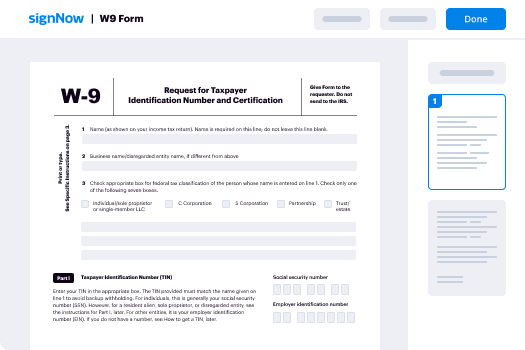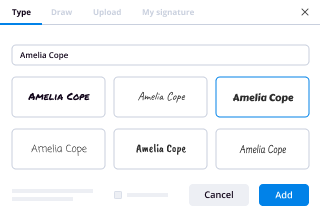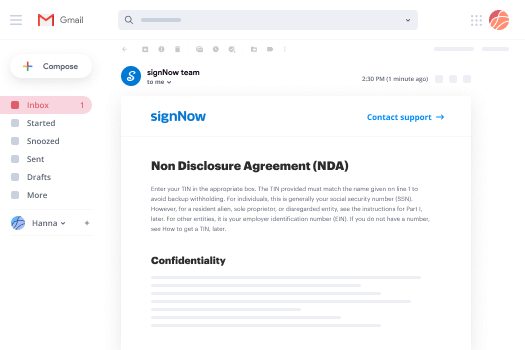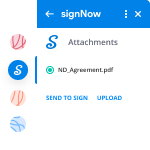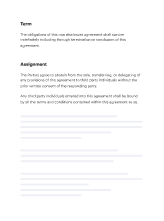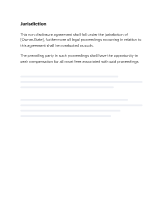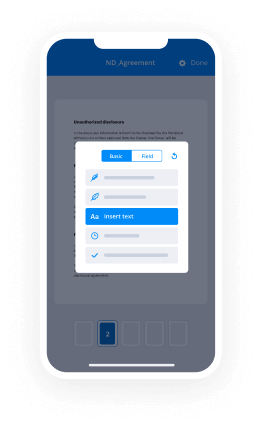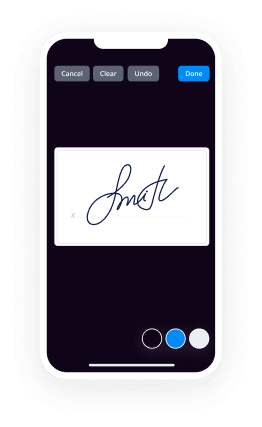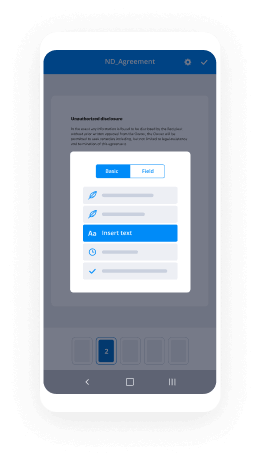Irrevocable Trust Agreement for Benefit of Trustor's Children
and Grandchildren with Spendthrift Trust Provisions
This trust agreement is made on ___________________ (date), between
_______________________ (Name of Trustor), of __________________________________
_____________________________________ (street address, city, county, state, zip code) ,
hereinafter referred to as Trustor, and _____________________ (Name of Trustee) of
____________________________________________________________________________
(street address, city, county, state, zip code) , hereinafter referred to as Trustee.
The Trustor , in consideration of the agreements and undertakings set forth below made
and assumed by the Trustee, and other valuable consideration, does assign, convey, and set
over to the Trustee and the Trustee's successors the property listed and described in Schedule
A , which is attached and incorporated by reference. The Trustee is authorized to and agrees
that it will receive and hold that property and such additional property as may be transferred,
assigned, or bequeathed to the Trustee from time to time by any person or organization, to
become a part of the principal of the trust created by this agreement, and all investments and
reinvestments of the same and income for the uses and trusts set forth below.
1. Initial Distribution The Trustee shall promptly distribute $____________ from the principal of the Trust
Estate to each of Trustor's grandchild ren who shall then be living, subject to postponement of
possession as provided below.
2. Division into Trusts for Children After making or providing for the foregoing distributions, the Trustee shall promptly divide
the Trust Estate into equal trusts to provide one trust for each child of the Trustor who is either
then living or then deceased, leaving one or more descendants then living. Each trust shall be
held and disposed of as provided below.
3. Children Trusts If a child survives the Trustor, then commencing with the death of the Trustor the
Trustee shall pay the income from his or her trust in convenient installments, at least quarterly,
to the child during his or her lifetime. The Trustee may also pay to the child such sums from the
principal of his or her trust as the Trustee deems necessary or advisable from time to time for
his or her health and maintenance in reasonable comfort, considering his or her income from all
sources known to the Trustee.
4. Division into Shares for Grandchildren
On the death of a child or on the death of the Trustor if the child is not then living, the
Trustee shall divide the child's trust into equal shares to create one share for each then living
child of the child (referred to as a grandchild) and one share for the then living descendants,
collectively, of each deceased child of the child (referred to as a deceased grandchild), or if
there is no descendant of the child living at his or her death, the Trustee shall distribute the
child's trust per stirpes to the then living descendants of the Trustor, subject to postponement of
possession as provided below, except that each portion otherwise distributable for whom a
share of the Trust Estate is then held under this agreement shall be added to that share.
Each share created for the descendants of a deceased grandchild shall be distributed per
stirpes to such descendants, subject to postponement of possession as provided below. Each
share created for a living grandchild shall be held as a separate trust and disposed of as
provided below.
5. Grandchildren’s TrustsThe income from a grandchild's share shall be paid in convenient installments, at least
quarterly, to the grandchild until complete distribution of the share or his or her prior death.
The Trustee may also pay to the grandchild such sums from the principal of his or her share as
the Trustee deems necessary or advisable from time to time for his or her health, maintenance
in reasonable comfort, education (including postgraduate education), and best interests,
considering the income of the grandchild from all sources known to the Trustee.
6. Right of Withdrawal After creation of a grandchild's share and after the grandchild has reached the age of
(e.g., 25 years) _____________, he or she may withdraw any part or all of his or her share at
any time or times. The Trustee shall make payment without question on the grandchild's written
request. The right of withdrawal shall be a privilege which may be exercised only voluntarily and
shall not include an involuntary exercise.
7. Power of Appointment If a grandchild dies before receiving his or her share in full, then on the grandchild's
death the principal and any accrued and undistributed income of his or her share shall be held
in trust or distributed to or in trust for such appointee or appointees (including the estate of the grandchild ), with such powers and in such manner and proportions as the grandchild may
appoint by his or her will making specific reference to this power of appointment.
8. Distribution to Descendants On the death of a grandchild any part of the principal and accrued and undistributed
income of his or her share not effectively appointed shall be distributed per stirpes to his or her
then living descendants, or if none, then per stirpes to the then living descendants of the
grandchild 's parent who was a child of the Trustor, or if also none, then per stirpes to Trustor 's
then living descendants, subject to postponement of possession as provided below, except that
each portion otherwise distributable to a descendant for whom a share of the Trust Estate is
then held shall be added to that share.
9. Distribution to Minors Each share of the Trust Estate which is distributable to a descendant who has not
reached the age of (e.g., 21) ______ years shall immediately vest in the descendant, but the
Trustee shall (a) establish a custodianship for the descendant under a Uniform Transfers (or
Gifts) to Minors Act, or (b) retain possession of the share as a separate trust until the
descendant reaches the age of (e.g., 25 years) _____________, meanwhile paying to or for the
benefit of the descendant so much or all of the income and principal of the share as the Trustee
deems necessary or advisable from time to time for his or her health, maintenance in
reasonable comfort, education (including postgraduate), and best interests, and adding to
principal any income not so paid.
10. Payments to Minors or Incompetents If income or discretionary amounts of principal become payable to a minor or to a person
under legal disability or to a person not adjudicated incompetent but who, by reason of illness or
mental or physical disability, is in the opinion of the Trustee unable properly to manage his or
her affairs, then such income or principal shall be paid or expended only in such of the following
ways as the Trustee deems best: (a) to the beneficiary directly; (b) to the legally appointed
guardian or conservator of the beneficiary; (c) to a custodian for the beneficiary under a Uniform
Transfers (or Gifts) to Minors Act; (d) by the Trustee directly for the benefit of the beneficiary;
and (e) to an adult relative or friend in reimbursement for amounts properly advanced for the
benefit of the beneficiary.
11. Spendthrift Provisions The interests of beneficiaries in principal or income shall not be subject to the claims of
any creditor, any spouse for alimony or support, or others, or to legal process, and may not be
voluntarily or involuntarily alienated or encumbered. This provision shall not limit the exercise of
any power of appointment.
12. Accrued and Undistributed Income Income received after the last income payment date and undistributed at the termination
of any estate or interest shall, together with any accrued income, be paid by the Trustee as
income to the persons entitled to the next successive interest in the proportions in which they
take that interest.
13. Common Fund; Merger of Trusts For convenience of administration or investment, the Trustee may hold the several trusts
as a common fund, dividing the income proportionately among them, assign undivided interests
to the several trusts, and make joint investments of the funds belonging to them. The Trustee
may consolidate any separate trust with any other trust with similar provisions for the same
beneficiary or beneficiaries.
14. Powers of Trustee The Trustee may retain any property (including stock of any corporate Trustee under this
agreement or of a parent or affiliate company) originally constituting the trust or subsequently
added to it, although not of a type, quality, or diversification considered proper for trust
investments. The Trustee shall have power to invest and reinvest the trust property in bonds,
stocks, notes, or other property, real or personal, suitable for the investment of trust funds; to
register property in the name of a nominee without restriction; to vote in person or by general or
limited proxy, or refrain from voting, any corporate securities for any purpose, except that any
security as to which the Trustee's possession of voting discretion would subject the issuing
company or the Trustee to any law, rule, or regulation adversely affecting either the company or
the Trustee 's ability to retain or vote company securities, shall be voted as directed by the
Trustor if living, otherwise by the beneficiaries then entitled to receive or have the benefit of the
income from the trust; to lease (for any period of time though commencing in the future or
extending beyond the term of the trust), sell, exchange, mortgage, or pledge any or all of the
trust property as the Trustee deems proper; to borrow from any lender, including a Trustee
individually; to employ agents, attorneys and proxies; to compromise, contest, prosecute or
abandon claims; to divide or distribute in cash or in kind, or partly in each, or in undivided
interests or in different assets or disproportionate interests in assets, to value the trust property
for such purposes, and to sell any property in order to make division or distribution; and to deal
with, purchase assets from, or make loans to, the fiduciary of any trust made by the Trustor or
any member of the Trustor's family or a trust or estate in which any beneficiary under this
agreement has an interest, though a Trustee under this agreement is such a fiduciary. The
Trustee is authorized to establish out of income and credit to principal reasonable reserves for
depreciation, obsolescence and depletion.
The Trustee may transfer the situs of any trust property to any other jurisdiction as often
as the Trustee deems it advantageous to the trust, appointing a substitute Trustee to itself to act
with respect to it. In connection with that the Trustee may delegate to the substitute Trustee any
or all of the powers given to the Trustee, which may elect to act as advisor to the substitute
Trustee and shall receive reasonable compensation for so acting. The Trustee may remove any
acting substitute Trustee and appoint another, or reappoint itself, at will.
15. Annual Account; Compensation The Trustee shall render an account of its receipts and disbursements at least annually
to the Trustor if living, otherwise to each adult income beneficiary. The Trustee shall be
reimbursed for all reasonable expenses incurred in the management and protection of the trust
and shall receive fair compensation for its services. The Trustee's regular compensation shall
be charged against income during the Trustor's lifetime and subsequently half against income
and half against principal, except that the Trustee shall have full discretion at any time or times
to charge a larger portion or all against income without being limited to circumstances specified
by state law.
16. Discretionary Termination If at any time a trust under this agreement has a market value as determined by the
Trustee of (e.g., $50,000) _______________ or less, the Trustee may in its discretion terminate
the trust and distribute the trust property proportionately to the persons then entitled to receive
or have the benefit of the income from that trust.
17. Rule against Perpetuities No trust created by this agreement, or by the exercise of a power of appointment, shall
continue for more than (e.g., 21) _______ years after the death of the last to die of the Trustor
and the beneficiaries in being at the death of the Trustor. Any property still held in trust at the
expiration of that period shall immediately be distributed to the persons then entitled to receive
or have the benefit of the income from that trust in the proportions in which they are entitled, or if
their interests are indefinite, then in equal shares.
18. Trustee Provisions Any Trustee may resign at any time by written notice to the Trustor if living, otherwise to
each beneficiary then entitled to receive or have the benefit of the income from the trust. In case
of the resignation, refusal, or inability to act of any Trustee, the Trustor if living, otherwise the
beneficiary or a majority in interest of the beneficiaries then entitled to receive or have the
benefit of the income from the trust, may appoint a successor Trustee.
Every successor Trustee shall have all the powers given the originally named Trustee.
No successor Trustee shall be personally liable for any act or omission of any predecessor.
With the approval of the Trustor if living, otherwise of the beneficiary or a majority in interest of
the beneficiaries then entitled to receive or have the benefit of the income from the trust, a successor Trustee may accept the account rendered and the property received as a full and
complete discharge to the predecessor Trustee without incurring any liability for so doing.
The parent, guardian, or conservator of a beneficiary under disability shall receive notice and
have authority to act for the beneficiary under this Section.
No Trustee wherever acting shall be required to give bond or surety or be appointed by
or account for the administration of any trust to any court.
19. Exercise of Power of Appointment
In disposing of any trust property subject to a power to appoint by will, the Trustee may
rely on an instrument admitted to probate in any jurisdiction as the will of the donee or may
assume that he or she died intestate if the Trustee has no notice of a will within (e.g., three)
________ months after his or her death.
20. Generation-Skipping Taxes If the Trustee considers that any distribution from a trust under this agreement other than
pursuant to a power to withdraw or appoint is a taxable distribution subject to a generation-
skipping tax payable by the distributee, the Trustee shall augment the distribution by an amount
which the Trustee estimates to be sufficient to pay the tax and shall charge the same against
the trust to which the tax relates.
If the Trustee considers that any termination of an interest in or power over trust property
is a taxable termination subject to a generation-skipping tax, the Trustee shall pay the tax from
the trust property to which the tax relates, without adjustment of the relative interests of the
beneficiaries. If the tax is imposed in part by reason of trust property and in part by reason of
other property, the Trustee shall pay that portion which the value of the trust property bears to
the total property taxed, taking into consideration deductions, exemptions, and other factors
which the Trustee deems pertinent.
21. Governing Law This agreement and trust are specifically created as a __________________ (name of
state) agreement and trust and the construction, validity, and effect of this agreement and the
rights and duties of the beneficiaries and the Trustee shall at all times be governed exclusively
by the laws of _________________ (name of state).
22. Counterparts This agreement may be executed in any number of counterparts, any one of which shall
constitute the agreement between the parties.
23. Construction
Unless the context requires otherwise, all words used in this instrument in the singular
number shall extend to and include the plural. All words used in the plural number shall extend
to and include the singular; and all words used in any gender shall extend to and include all genders.
24. No Bond or Surety No Trustee under this agreement shall be required to give or file any bond or other
security or surety of any kind, nor shall any Trustee be personally liable except for willful
malfeasance or bad faith.
Trustor and Trustee have executed this Agreement as of the day and year first above
written.
__________________________ __________________________
__________________________ __________________________
Name & Signature of Trustor Name & Signature of Trustee
(Acknowledgments before Notary Public)
(Attach Exhibit)


